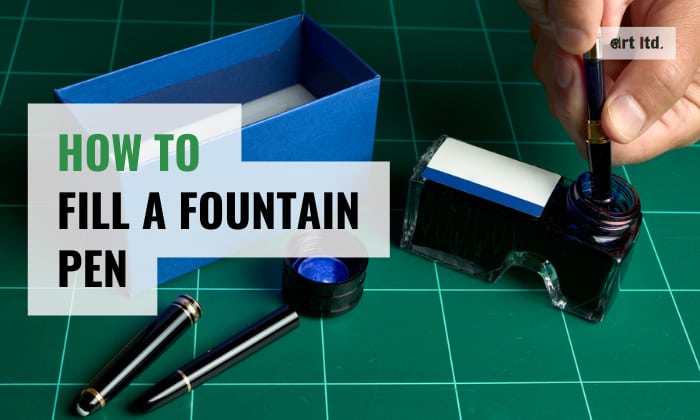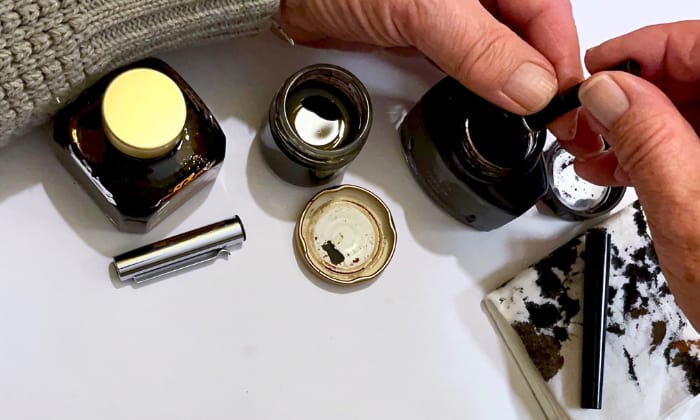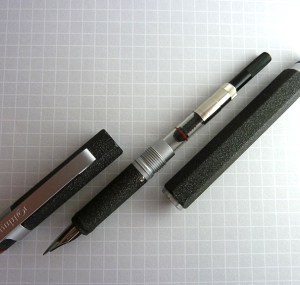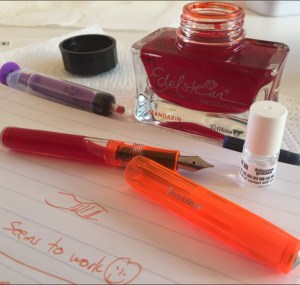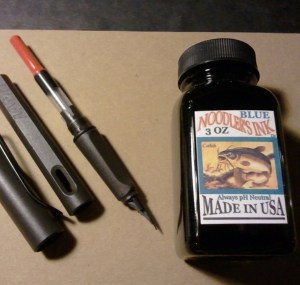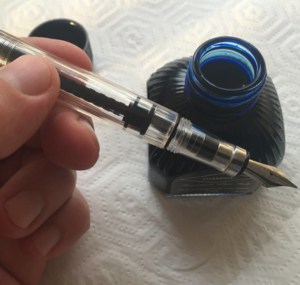There’s something special about fountain pens that you can’t find in others. Their classic look and the luxurious writing experience they can offer are nothing but exceptional.
To keep these pens in good shape and preserve the writing experience, they require a bit of extra care and maintenance. Among these, re-filling ink is one of the first maintenance tasks you’ll have to learn.
In this article, we tackle fountain pens and the different ways how to fill a fountain pen according to its type.
Table of Contents
Ways to Fill a Fountain Pen
We will take a closer look at the 5 most common fountain pen filling systems and learn how you can properly set up a fountain pen refill.
1. Cartridge fountain pens
Cartridge fountain pens are considered to have the most convenient mechanism because they don’t need manual refilling. Instead, they come with a disposable ink cartridge, which you can readily replace.
These are the best options for people that are always on the go. However, they don’t hold much ink, and color options are rather limited.
Although fountain pens with ink cartridges come in many variations, the steps to fill them are more or less the same.
- Remove the cap and then the grip section.
- Gently pry off the used cartridge. Some fountain pens can carry a spacer or a backup ink cartridge, meaning it has 2 cartridges inside the barrel.
- Check your refill, the tapered part with the cup-shaped end should fit the grip section.
- Put ink cartridge in fountain pen by inserting it into the grip section until you hear a snap.
- Try wiggling the cartridge to see if it’s firmly attached to the grip section.
- Put back the spacer or the spare cartridge if there’s any.
- Screw the barrel back into the grip section.
- Place in a vertical stand with nibs facing down. Wait for at least an hour, and you’re ready to write.
2. Eyedropper fountain pens
This type is another straightforward way to refill a fountain pen. It allows you to fill in more ink and choose whatever color you want. However, if you’re not careful when refilling, you may have to deal with a lot of leaking.
- Uncap and unscrew the barrel from the grip section.
- Clean the barrel if it’s your first time using the pen or if you intend to change the ink color.
- Apply a small amount of silicon grease around the grip section thread. You can use a syringe filled with silicone. Without a syringe, you can use your finger for that.
- Screw the barrel back and forth to evenly spread out the grease on the thread. Use a paper towel to wipe off all the excess grease.
Applying silicone grease will serve as a layer that prevents ink from sipping into the thread, which is the main cause of leaking. - Place a thick towel on the table so you don’t make a mess. Slowly fill the barrel with ink using the dropper or with a syringe right below the thread.
- Partly screw the grip section into the barrel midway with the nib facing up.
- Turn the pen so its nib faces the table and screw the pen all the way in. A few drops of ink will come out of the nib at this point—it means the pen is primed and is now ready to go.
If you don’t want to make such a mess, you can screw the grip and the barrel all the way in right away in step 6. However, this will require you to wait a bit for the pen nib to become saturated with ink.
3. Converter fountain pens
This type is akin to the cartridge type, but this one needs a little more effort, as you need some pumping to get ink into the reservoir.
If you ever need to change the converter or shift from cartridge type to converter type, watch the size and the type. Basically, a converter has 4 types:
- Piston converters (Waterman Converter)
- Squeeze converters (Parker 51 from fountain pen Parker)
- Plunger converters (Monteverde Mini Converter)
- Push button converters (Pilot CON-70)
In any case, converters can only carry a volume of more or less 1ml, so they may require more frequent refills. However, you can freely choose the type of ink you want. If you’re using converter fountain pens for the first time, here’s how you fill them with bottled ink.
Detailed steps
- Remove the cap and the grip section.
- Submerge the whole nib into the ink.
- Follow the below steps according to the pen type.
- Piston converters: hold the shaft located at the bottom end and turn it counterclockwise until the piston is completely lowered down. Turn it again to the opposite side to let ink stream inside the converter.
- Squeeze converters: squeeze the converter’s body, then slowly release it. This will expel air and drive the ink in. Keep doing so until the barrel is full.
- Plunger converters: the process is almost the same as a piston converter, but you don’t need to turn the shaft. Simply push and pull the shaft to pump ink in.
- Push button converters: press and depress the button rapidly until you get enough ink inside the converter.
- 4. Clean the nib and return the barrel.
4. Crescent fountain pens
They are often regarded as the vintage type based on the Conklin original patent. This fountain pen has a built-in ink reservoir. It works with a lever mechanism to put ink into a fountain pen and does not have to be disassembled to refill.
With this type, you can choose whatever ink you like. However, because of its design, it cannot store as much ink as the eyedropper type.
Easy steps to follow:
- While uncapping the pen, notice the metal crescent knob and a slotted ring perpendicular to it.
- Rotate the ring to align the slot parallel to the crescent knob
- Push the crescent into the slot. This will deflate the reservoir called the ink sac. Hold for a while.
- Open the ink bottle and dip the nib, making sure it is fully submerged.
- Slowly release the crescent knob. Observe some bubbling, indicating that ink is starting to flow into the sac.
- Repeat the process until you see no bubbling.
- Once done, turn the ring slot towards the back or away from the crescent knob. (This position is the locked position. This will prevent you from pressing the knob and accidentally gushing the ink out.)
- Clean the nib and try it out.
5. Piston fountain pens
Filling a fountain pen of this type is analogous to filling a piston converter. Moreover, for this type, its piston is integrated into the barrel.
Piston fountain pens are designed to last longer and store more ink than those converters. They are typically pricey as they fall under the premium category.
Steps to follow:
- Uncap and check the piston knob towards the fountain pen end and twist it open.
- Plunge the nib down into the ink bottle. Again, make sure that it is totally immersed.
- Twist the knob close. For the most part, you have to repeat the process to make sure the barrel is fully filled.
- Wipe clean excess ink.
Tips and Tricks
- For dip-to-refill type, always ensure the whole nib is fully immersed into the ink to pump the ink effectively.
- You can bring these pens on a flight but be sure to drain the ink to avoid leaking caused by the change in the atmospheric pressure.
- There’s another way to refill the converter without dipping the nib. This is done by directly filling ink with a syringe.
Conclusion
Knowing how to fill a fountain pen should be one of the basics that you have to master as an owner or as a collector. It might be daunting but eventually, you’ll learn to deal with it.
Make sure to check what type of fountain pen filler you’re most comfortable with. For instance, if you travel often and don’t want to carry an ink bottle, then go for a cartridge type.
Alternatively, if you don’t want to refill too often and want to have more color options, a piston or an eyedropper fountain pen would be best for you.

Art has always been a part of my life; it influences my upbringing and later my career choice. For me, it is always a part of my parenting technique. So for whichever purpose that you come to art, you can start here with us.
